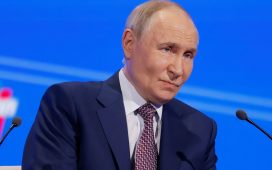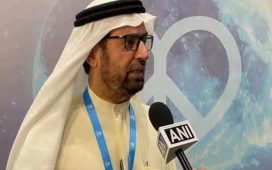The first Asian American to head the Bank was Jim Yong Kim in 2012-19. Unlike Kim, who was born in Seoul and migrated to the US when he was just five, Pune-born Banga studied in India and started his professional career at Nestle and PepsiCo on Indian soil. He moved to the US in 2000 and became an American citizen only in 2007. When Banga takes over the reins of the Bank, possibly in July, two of his teammates would be Indians — Chief Financial Officer Anshula Kant and Chief Economist Indermit Gill — a rare instance when a few of the top executives at the Washington, DC, headquarters would be able to crack a joke in Hindi.
“Today World Bank is as much an Indian bank as it is a US bank,” says a World Bank official in New Delhi, requesting anonymity.
“Such a strong India representation in the Bank is something you don’t see in other multilateral banks. If you leave aside the Bank’s president who is always an American, today there are more Indians than Americans in the leadership position,” he adds. The Bank’s chief risk officer, Lakshmi Shyam-Sunder, is also an Indian.
 ET Online
ET OnlineThough these top Indian executives don’t directly work on the India programme, the reality is that India is the Bank’s biggest client and is often viewed as a critical partner. In FY22 (the Bank’s fiscal year is July 1-June 30), it approved loans worth $3,986 million, or almost $4 billion, to India, way ahead of Indonesia ($2,604 million) and Colombia ($2,130 million), its second and third largest recipients, under the International Bank for Reconstruction and Development (IBRD). Two entities, the IBRD, which lends to middle-income and select low-income countries, and the International Development Association (IDA), which provides interest free loans and grants to poor countries, are collectively called the World Bank. India, which used to receive IDA grants till 2013, is now a donor to it.
The World Bank Group has three more bodies — the International Finance Corporation (IFC), the Multilateral Investment Guarantee Agency and the International Centre for Settlement of Investment Disputes. Even for IFC, which focuses on the private sector in developing countries, India is the largest client country, accounting for 10% of its portfolio, according to a Bank strategy paper updated till October 2021.
 ET Online
ET OnlineIndia’s association with the Bank goes back to the pre-Independence era when it became a founding member in 1945. Four years later, in 1949, India was the first Asian country to receive a loan from the Bank, $34 million, which it deployed for a railway project. In the past, the Bank extended loans for several iconic projects, including $5.6 million to Air India in 1957 for purchasing three aircraft, auxiliaries and a flight simulator, among others. In the 1960s and 70s, the focus of the multilateral lending agency shifted to agriculture and fertilisers as India embarked on the Green Revolution, a mission that required high-yielding seeds, mechanised farm tools, fertilisers et al to attain food sufficiency. Till now the Bank has extended loans to 673 projects in India with a total commitment of $128 billion. The sectors that received loans include health, agriculture, education, transport and water.
OP Agarwal, a former civil servant who worked in the Bank between 2009 and 2016 as a senior urban transport specialist, says the relative importance of the Bank has “somewhat come down” of late even as India’s requirements for resources have risen. “Indian metro rails, for instance, are mostly funded by resources from Japan, France et al. Unlike in the past, several alternative funding sources are now available,” he says. “Also, over the years, the Bank’s procedures for receiving loans have become cumbersome,” he adds.
Montek Singh Ahluwalia, former deputy chairman of the erstwhile Planning Commission of India, argued that developed countries are largely against any expansion of the Bank’s lending, and the voting size of developing countries is too small to make any change in it. Ahluwalia, who worked both at the Bank and at the International Monetary Fund, said this two years ago when the then India head of the Bank, Junaid Ahmad, interviewed him. The video of the interaction is available on the Bank’s website. Ahluwalia went on to say that “an increased role for India and other developing countries in the World Bank can only come if there is a willingness among the Bank’s major donors to see a reduction of their vote share”.
In the IBRD segment, India’s current vote share is 3% as opposed to 15.5% for the US, 7.3% for Japan and 5.6% for China, according to data updated till March 9. The vote share varies according to a country’s contribution to the capital.
 ET Online
ET OnlineThe question that crops up here is whether the Bank will be willing to extend more loans to India, a country that has been aiming at a higher growth rate to reach a high-income level by 2047. Auguste Tano Kouame, the Bank’s country director for India, tells ET that the present size of IBRD loans to India is 14%. “Still, we can provide more support. But how much more is the question. It will all depend on our balance sheet. In fact, our ability to borrow more from the market at a low cost depends on our balance sheet,” he says.
Sources in the Bank say the current loan portfolio to India has not touched the Bank’s single borrower’s limit, a threshold determined by creditors to ensure that the Bank does not concentrate all its risks in a single country. The speculation in the Bank is that a further reduction of loan to China could benefit India as there is always a possibility of channelising the spare dollars to New Delhi. Until a couple of years ago, India and China were at the same level of lending but now total loans to India are almost double that of China.
The Bank believes it has a role to play in India. It is not just that the New Delhi office is its largest country office globally. Or, that the Bank’s global service centre in Chennai, which houses about 1,200 staff plus contractors, is its largest presence outside Washington, DC. Kouame says, “We are committing about $4 billion through new projects each year.” He adds: “India aims to be a $5 trillion economy by 2030 and a developed country by 2047, and for that to happen the country needs to grow at 8% annually during this Amrit Kaal (2022-47). The challenge is also to ensure that this growth is inclusive and climate smart. The Bank is playing a supporting role in both these areas.”











